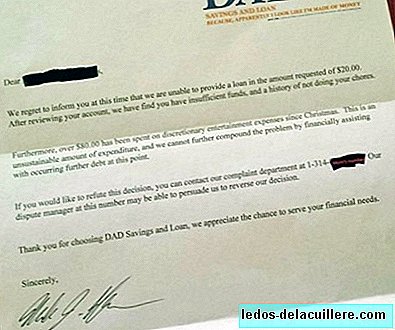
We have it closer than we think but we are often not aware of the danger it poses. October 23-29 is celebrated International Week of Lead Poisoning PreventionWell, although the harmful effects of this metal are known and many countries have taken measures in this regard, exposure to lead, especially in childhood and during pregnancy, remains a major problem in the world.
Lead in the blood affects childhood development, even in small quantities, and worries in recent years the increase in the number of children with intellectual disabilities due to the influence of exposure to this metal. But where is it?
At present, the main source of lead is the atmosphere, although its content is decreasing thanks to the ban on using leaded gasoline. The smoke from the exhaust pipes (especially the damaged ones) can lead to the atmosphere. You can also enter the drinking water through the corrosion of some pipes that have been manufactured totally or partially using this metal.
The broadest use of lead as such is found in the manufacture of accumulators, cable sheaths, construction elements, pigments, soft welding, ammunition, sinkers for fishing and also in the manufacture of toy soldiers ...
In many countries there is a regulation on the use of lead in construction and painting, but in old houses (in Spain, before 1978) there may still be elements with this chemical. Lead paint, paint chips and dust that are released especially in the reforms or with the deterioration of time can pose health hazards if not handled properly.
Children who breathe that dust (difficult to remove completely), who play in contaminated soil, can even carry lead debris in their mouths, the smallest even directly paint chips.

Lead exposure causes deaths
The problems arising from prolonged exposure to lead are greater in developing countries. According to the estimates of the Institute of Sanimetry and Evaluation in 2013, exposure to that metal caused 853,000 deaths and the life span of many people was reduced.
How paints with high concentrations of lead are an important source of poisoning, especially for children, this year the International Week of Lead Poisoning Prevention emphasizes protecting the little ones. And, although there are good substitutes, paints with high lead content can still be purchased and used in many countries for decorative purposes.
When painting the children's room or any room in the home, we have to take into account where the paints we use come from and verify that they are free of lead, although sometimes the labeling does not help.
Since 2002, an effort has been made to achieve the gradual elimination of lead from paints, when governments called on the World Summit on Sustainable Development. In 2011, the World Alliance was established to Eliminate the Use of Lead in Paint. It seeks to establish appropriate national regulatory frameworks that allow an end to the manufacture, import, export, distribution, sale and use of lead paints and products coated with such paints.
However, as of today, only 62 governments have committed themselves and established binding laws for the control of lead paints, according to a survey conducted by WHO and the United Nations Environment Program (UNEP), which jointly coordinate the Alliance against Lead in Painting.
Some Latin American countries that do not yet have mandatory laws on the limit of lead in paints are Bolivia, Colombia, Dominican Republic, Ecuador, El Salvador, Guatemala, Honduras, Nicaragua, Paraguay and Peru. Many other countries do have rules in this regard, but they need to strengthen their compliance and fill legal gaps regarding import and export.
The Global Alliance to Eliminate the Use of Lead in Paint It has the following objectives:
- Raise awareness about lead poisoning.
- Highlight the efforts of countries and partners to prevent childhood lead poisoning.
- Encourage the adoption of new measures to eliminate the use of lead in paint.
And, as we see, your task is far from over: you need to insist on this issue and win a social and political commitment. Hence it is still necessary International Week of Lead Poisoning Prevention and that you want to protect children especially.












